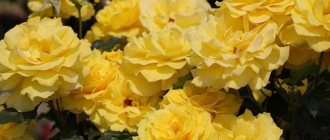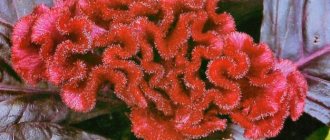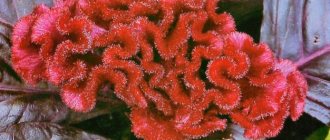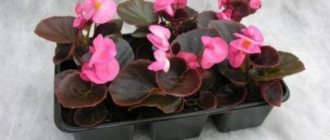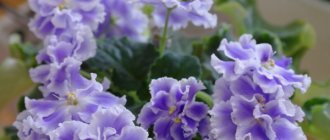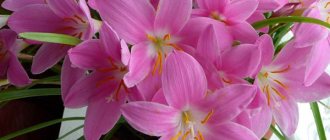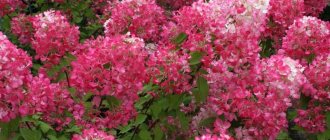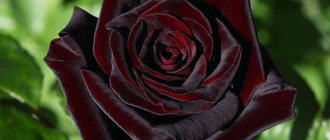This herbaceous plant of the cereal family has long settled in many summer cottages as part of decorative plantings. It is loved by both landscape designers and ordinary gardeners for its versatility, absolute unpretentiousness and abundance of colorful forms.
Fescue can become both a tapeworm on the site and can be perfectly combined with other plants - other cereals, flowering perennials, even trees like spruce, birch and juniper. Traditionally, this plant is used in landscape design as a ground cover. Fescue is ideal for rocky compositions, mixborders and creating soft accents in plantings.
Description of the plant
There are several types of fescue, which differ primarily in the color and length of the leaves. The leaves or spikelets are collected in dense bunches ranging from 40 to 120 cm in length and can have a color ranging from purple, like red fescue, to regular green. The roots of all types of fescue are fibrous and usually have a depth of 20-30 cm.
Meadow fescue usually has green leaves and spikelets. The spikelets themselves are not very developed, which reduces the decorative qualities of the plant. The height of the plant is from 60 to 120 cm. But since this type of fescue is used mainly for decorating lawns and open areas, the plant is usually cut. Because of this, its leaves can be up to 20-60 cm high. Meadow fescue is distinguished by soft blades of grass that are pleasant to the feet.
The same simple plant is sheep fescue, which is characterized by shorter grass. This type is also often used to decorate lawns and open areas. Sheep fescue survives drought well, so it can often be found on dry lands or hills.
Gray fescue is the most beautiful species - its leaves have a light bluish color. This plant is most often used for various landscape design figures.
Silver caps of fescue look extraordinary anywhere:
- In the form of borders
- In mixborders
- In vertical clubs
- In the center of horizontal flower beds
For a brighter design, red fescue is used, which has green-pink leaves and red spikelets. The height of this plant is usually 30-40 cm. Photos of fescue perfectly demonstrate how it can create the necessary accents in a flowerbed or mixborder. However, due to its bright color, fescue is used in flower beds and compositions as a single plant.
Varietal types of fescue, such as gray and red, can be found mainly in private areas, parks or other places where the plant is cultivated.
Important! Since fescue is able to inhibit the growth of weeds, it is good to decorate flower bed borders, lawn borders or other places where you need to protect the soil and neighboring plants from green pests.
Interesting varieties
There are many varieties of the Festuca cinerea species, most of them are distinguished by their delicate coloring. Recommended varieties of gray fescue:
- "Elijah Blue" Elijah Blue - a variety ideal for rockeries, flower beds, and growing in pots on the balcony. Planted at a distance of 40-50 cm. Looks beautiful against the background of dark green coniferous shrubs, next to heather plants, flowering perennials. This is a variety with gray-green leaves that retain color exceptionally well throughout the year.
- "Sibersea" Sibersee - with white-silver leaves, blooms gently, does not require pruning.
- "Intense Blue" Intense Blue - has a beautiful shape and rich color. A variety with beautiful blue leaves and flowers 40-50 cm high.
- "Silberreiher" Silberreiher - has delicate inflorescences.
- “Azurit” Azurit is a variety with low leaves 15 centimeters high.
- “Blauspatz” Blauspatz – suitable for lovers of steel shades.
- "Meerblau" Meerblau is a sea-colored grass.
- “Blauglut” Blauglut is a low variety, the dark blue leaves of the variety grow up to 15 cm.
- "Golden Toupee" Golden Toupee is a variety with unusually colored leaves, which are lemony in early spring and later turn green. Grows up to 15-20 cm in height, forming very small yellow-green tufts. Leaves are needle-shaped, hard, pointed. Blooms from late May to June or July, forming paniculate inflorescences of cream color. Frost-resistant variety. Number of plants per 1 m²: 12- 16.
Photo. Variety Golden Toupee
- "Blue select" Blue select - flowering shoots reach 25-35 cm. The leaves are purple and blue. There are spurs at the base of the leaf blade.
- “Compacta blue” Compacta blue is a compact variety, completely frost-resistant, grows up to 25-35 cm.
Soil and fertilizing
Although fescue is unpretentious, it does not like acidic soils. In general, the plant gets along well in loose, turfy soils. If the soil is chernozem, rich in humus, then the plant will be fluffy and bright, which is important mainly for species such as red and gray fescue. On dry, poor soils, sheep, meadow or grassy fescue takes root better.
The root system of the plant strengthens, heals the soil and destroys weeds. This is why planting fescue is good for the soil. This plant is an excellent green manure.
The plant is also used to strengthen slopes and prevent landslides. The following fertilizers are used to feed the plants:
- Ashes all season long
- Compost is getting closer to winter
- Mineral fertilizers throughout the season
- Nitrogen fertilizers at the beginning of the season
Scope of application
Due to its attractive appearance and properties, tall fescue is actively used:
- for creating lawns in the landscape design of personal plots;
- to strengthen the slopes of transport highways;
- as a forage plant with a yield of 50 to 100 centners per hectare;
- as green manure (green manure);
- as a turf-forming plant in a turf-humus soil maintenance system.
In gardening a personal plot, tall fescue occupies one of the leading positions among cereal crops. The compactness, decorativeness, and unpretentiousness of the plant allows every gardener to find a place in the garden for this beautiful grass, which with its fascinating appearance will make the area original and stylish.
Watering and temperature
The plant prefers moist soils that are regularly and well irrigated. Therefore, questions about how to water fescue usually do not arise. Thanks to its powerful, fibrous roots, the plant easily survives drought. However, the plant does not like areas with very high humidity.
Moreover, due to its low watering requirements, this plant gets along well with other herbs and flowers, which is important for any flower garden and landscape design compositions.
Advice. Despite the small leaves, the plant really does not like watering in the bright sun at its zenith. Despite the fact that the leaves of the plant are quite thin, they can easily get burned by droplets of water in strong sun.
Ornamental plant species and varieties feel best in the middle zone. But they can also be grown in northern or southern regions. Any type of fescue is frost-resistant, so sudden cold weather will not destroy them. Warmer areas are loved by sheep fescue, which grows wild in both forests and hot steppes.
Rules of care
This variety of crop is considered unpretentious . Tit fescue is capable of growing independently without the participation of a gardener. However, to achieve maximum decorativeness of the perennial, it is recommended to adhere to simple rules of agricultural technology.
The plant reacts poorly to excess moisture in the soil. Therefore, it can be watered only during a long absence of precipitation. It is recommended to do this in the evening using the sprinkling method. The frequency of moisturizing is once every 3-4 weeks.
Fescue Titmouse can be fed no more than 2 times per season, since the increased content of nutritional components in the soil inhibits its development. The first time you need to fertilize a perennial is in early spring at the beginning of the growing season . At this time, it is recommended to use nitroammophoska at the rate of 30 g per 10 liters of water. The second feeding is recommended in June. During this period, it is necessary to use superphosphate 30 g and potassium sulphide 25 g per bucket of water.
Watering with a nutrient solution is recommended for the plant.
When using Titmouse fescue to create a lawn, it is necessary to mow it once a month , since the plant is characterized by a slow growth rate. When using a perennial as an element of landscape design, there is no need for a radical pruning. The plant only needs to be thoroughly combed with a rake in the spring to get rid of dry shoots. It is also recommended to remove faded flower stalks after flowering.
Planting and growing
Fescue is propagated in a variety of ways:
- Dividing the bush
- Seedlings
- Seeds
Fescue seeds germinate easily and quickly and immediately begin to actively grow. Shoots appear already 4-6 days after sowing. The sprouts rise and develop quite rapidly, within 1-2 weeks after emergence they turn into full-fledged seedlings, ready for open ground. Planting seedlings or adult bushes in the ground can be done from the beginning of April. It is better to cover young seedlings with some kind of material.
It is also possible to sow seeds directly into open ground. To prevent the shoots from dying, it is better to sow in late April - early May.
Important! Sowing seeds in open ground is usually used when decorating lawns, lawns and fields. Single seedlings are usually used for use in landscape design.
Advice. Since plant seedlings appear very quickly and their development is fleeting, growing this plant from seeds can be interesting for children. The child will be able to observe how a whole bush and a small seed develop. In this case, he will not have time to get tired of this plant.
What subspecies does it belong to?
Fescue Titmouse is a crop variety that is obtained on the basis of a bluish species .
The purpose of the creation was to improve the decorative qualities of the perennial, but at the same time maintain its frost resistance and unpretentiousness. Judging by the reviews from gardeners, Sinichka fully meets the stated characteristics.
The variety, like its ancestor, has the same original shade of leaves - bluish. The plant easily adapts to climatic conditions . The titmouse feels great in open sunny areas, maintaining its decorative appearance.
It is not known for certain who is the originator of this variety. But the seeds of the plant are sold by agro.
Diseases and pests
The fescue plant is resistant to various diseases and pests. Ticks, aphids and other insects rarely pay attention to it. For this reason, fescue will be useful in compositions, as its presence will inhibit the migration of insects from plant to plant.
Among the diseases, fescue can be affected by fungus or mold if the plant lives in very moist, slightly swampy soil. To get rid of the disease, you just need to trim off the affected foliage.
Simple and unpretentious fescue lives 10-15 years. During this period, she will decorate the garden and also make the living of her plant neighbors more comfortable.
Tools, means
To properly care for blue fescue, you will need the following gardening tools :
- shovel - for digging up soil;
- rakes, forks for loosening or creating furrows for planting seeds, combing (cleaning) bushes;
- garden roller - for compacting and leveling the turf on the lawn;
- pruners - to remove dried leaves;
- watering cans or hose for watering.
It is necessary to prepare in advance different types of feeding - for all seasons. You will need fertilizer, drainage, and hay or sawdust for wintering shelter.
